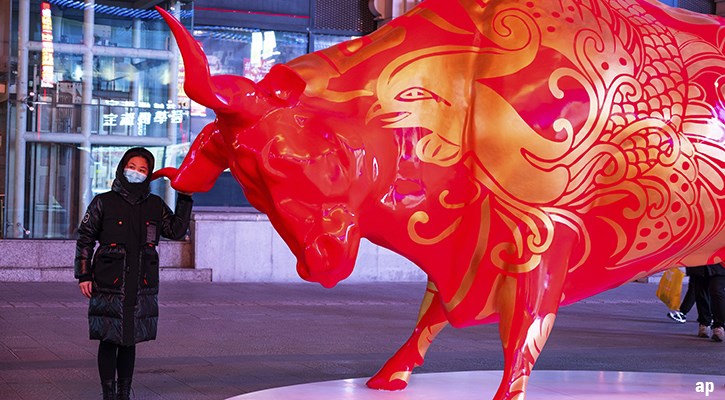Last year proved to be a wake-up call for investors in emerging market bonds. And it was largely due to a combination of three factors, says David Nava, senior portfolio manager, global fixed income and currencies, emerging markets at Toronto-based RBC Global Asset Management Inc. This year could be equally challenging, says Nava, as China remains the key to emerging market asset performance.
“In April 2018, the market realized that the emerging market [EM] outlook is deteriorating. EM growth is a very important driver for sentiment and appetite for EM assets. That was the first key factor,” says Nava, lead manager of the $846.9 million RBC Emerging Markets Bond Fund F .
The second factor was the cycle of interest rate hikes by the U.S. Federal Reserve. While carefully telegraphed to the market, it started to impact global liquidity. “The era of easy money was coming to an end,” says Nava, a native of Mexico City who earned a BSc in economics from the prestigious Instituto Technologico Autonomo de Mexico in 1995 and in 2001 immigrated to Canada, where he graduated with an MBA from the Rotman School of Management in 2004.
Finally, Nava notes that tensions between the U.S. and China, over trade and accusations of intellectual property theft, only worsened the appetite for EM assets, since many emerging markets trade heavily with China.
“The combination of EM data slowing down, the Fed rate hikes and U.S.-China relations became a wake-up call,” says Nava, says Nava, who joined RBC GAM in 2004 and shares duties with Toronto-based fixed income analyst Earl D’Almeida and London, England-based senior fixed income sovereign analyst Andrew Fava. “In 2017, the easy money was still there and there was no need to differentiate among EM countries in terms of the fundamentals. The search for yield was very apparent - and brought some implications for investors. The market turned its attention to the fundamentals, rather than just the technicals.”
A cautionary tale from Argentina and Turkey
Among the countries whose bonds were hit the most were Argentina and Turkey. “In 2017, the central bank of Argentina lost credibility when it changed the inflation target, in its own favor. That was one of the triggers that hit the asset class,” says Nava, adding that many EM currencies also took a hit as their bond yields shot up. In the case of Argentina, U.S$-denominated bond yields went up 490 basis points (bps) and ended at 10.86%. In 2018, total fixed income return fell 22.2%, while the Argentine peso lost about half of its value against the U.S.$. In a similar vein, Turkish U.S.$-denominated bond yields went up 165 bps and prices fell by 5.3%.
Last year, Nava’s five-star rated fund returned 4.67%, compared to -2% for the Emerging Markets Fixed Income category average. Nava argues that a top-down strategic approach is a big driver of performance. “In the last couple of years, we have been more active with our over- and under-weight [positions] at a country level,” says Nava. “Turkey and Argentina are examples of under-weights starting in 2017.”
Start with country fundamentals
Security selection for Nava comes after determining the appropriate portfolio exposure to a particular country. “We monitor the direction of the fundamentals. That’s our top-down approach,” says Nava. Nava and his colleagues use a proprietary fundamentals-based system to rank 85 countries in the EM space. Among the key factors are economic growth, external accounts, banking systems and ESG (environment, social and governance). “We are looking for a change in direction. You can have countries with weaker fundamentals. But if they have been improving in recent months, it could represent a good opportunity because the yields and spreads could be attractive,” says Nava.
RBC Emerging Markets Bond Fund is invested in 61 countries of the 67 in the benchmark Canadian-dollar-denominated JP Morgan EMBI Global Diversified index. There are under-weights in countries such as Lebanon, Pakistan and Mexico. “It’s not because the fundamentals are weak in Mexico. But what the government has been doing recently is giving me some concerns that they are moving to more populist policies, and are less market-friendly than other countries,” says Nava.
Currently, the top five countries are: Mexico 4.32%, Indonesia 4.33%, Peru 3.3%, Turkey 3.89% and South Africa 3.7%. Although most country weights are similar to the benchmark, Nava has strong views on certain countries such as Lebanon, which is very much underweighted compared to the index.
In terms of duration, the fund is neutral at 6.68 years, versus 6.62 years for the index.
From a currency standpoint, the bulk of the portfolio is in U.S.$ denominated bonds with a tiny portion in local currencies. The currency exposure is unhedged.
As for bond ratings, about 45.7% is held in investment-grade securities and 64.3% in high-yield. “But within the high-yield portion, there tends to be more BB-rated bonds than B-rated bonds, which are lower quality.”
There are about 152 securities in the fund, plus a small exposure, for liquidity purposes, in iShares JP Morgan U.S.$ Emerging Markets Bond ETF (EMB), and VanEck Vectors JP Morgan EM Local Currency Bond ETF (EMLC).
Vietnam and Rwanda look promising
Among the sovereign bonds that Nava likes are those issued by Vietnam. “It’s a high-growth country and grew 6.7% in 2018, and is expected to grow 6.5% in 2019,” says Nava. “It has improving credit metrics and a current account surplus of 3%. Manufacturing activity is still growing, and it signed the Trans- Pacific Partnership with 10 countries.” The BB-rated bonds are maturing in 2024 and yield 4.4%.
Nava is also favoring Rwandan bonds. “It’s a high-growth country and grew 7.4% in 2018 and is expected to grow 7.8% this year. Rwanda has a strong institutional framework and has made significant improvements in the World Bank’s ease of doing business rankings,” says Nava, noting that Rwanda is ranked 29th out of 140 countries. “Like most small countries, it has a current account deficit because it is growing. The 8% current account deficit is something to keep an eye on, but the government is aware of it.” Maturing in 2023, the B-rated bonds are yielding 6.4%. In contrast, Honduras and Belarus bonds of similar duration are yielding 5.7%.
Brazilian 5-year bonds, rated BB are paying 4.3%. But Nava is under-weighting Brazil because even though the market is positive, he is not enthusiastic about the new president, Jair Bolsonaro. “We’re not getting compensated enough. I’d rather have Vietnam as opposed to Brazil.”
China holds the key
Looking ahead, Nava maintains that the first half of 2019 will be challenging, mainly because China remains the key for EM assets.
“So far, we have not seen any evidence that the stimulus that Chinese authorities have put in place has had any positive effect on the economy. It is still slowing down,” says Nava. “But we know that at some point those measures will have a positive effect and we will see stabilization in the Chinese numbers.”
That could happen in the second or third quarter and sentiment to China and by extension EM growth could swing into positive territory. One leading indicator to watch is Total Social Financing, a broad measure of credit and liquidity. So far, on a year-over-year basis, it has not improved. “My plan for this year is to be a little defensive in the first part of the year,” says Nava. “We have to see clear evidence that China is stabilizing.”







:quality(80)/cloudfront-us-east-1.images.arcpublishing.com/morningstar/VYKWT2BHIZFVLEWUKAUIBGNAH4.jpg)












